|
|
|
McARTHUR
MODERN TARTAN
background
CLAN HISTORY:- PAGE 1, PAGE 2,
|
Motto:
Fide Et Opera (By fidelity and Work)
Arms:
Azure, a cross
Moline argent between three antique coronets
Badge:
Two laurel branches in orle, proper
Tartans:
MacArthur
Plant
Badge: Fir club
moss, wild myrtle
Gaelic Name: MacArtuir
Motto: Fide et Opera ( by faith & work )
War
Cry: Eisd! O'Eisd!
(Listen! O Listen!)
Origin
of Name: Son of
Arthur |
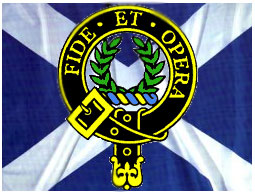
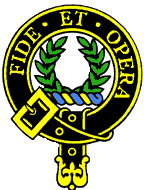 |
|
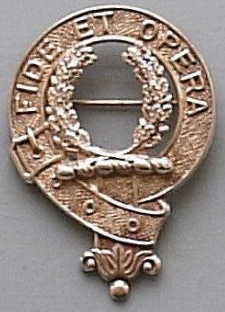 |
Septs:
(some of ) Arthur McArthur MacArther McArther McAuthur MacAuthur McArthor
MacArtair McArthure Makarturicht Maccaiter Makkerthrye M'Carthur Maccarter
M'Erthir Mc Harter M'Arthur Makarthure M'Carthair M'Artour M'Carthour McCarthair
M'Artoure M'Arthor M'Arthour M'Carter M'Airthour M'Cairter M'Kartur McHarter
McKerter MacArtur McKairtour M'Cairtter McAtur Makcairtour Mackartar MacArter
McCarturMcerter McArter M"Cartour Maccart McArtor M'Arthure Makarta
M'Cartur mcArthour Magarta M'Arthur Mecarta McArta mcArtor MacArta MacAtair
McCartor Carter MacArtar McArthor Cartter McArtair Makarthour MacArtor McArther
McCarter Mcarthor MacArthor McArtour Mcartur etc
Clan Badge
|
|
Clan
MacArthur is one of the most ancient and revered clans from Argyll &
the Highlands, so ancient as to make modern research difficult. They had resided
there so long that, even in Celtic days, they were the subject of a celebrated
couplet
"The hills and streams and MacAlpine but whence came
forth MacArthur?"
Another
saying known by Highlanders was:
"There is nothing older, unless, the hills,
MacArthur and the devil"
There
is some uncertainty whether our forebears sprang from Cormac MacArt,
third-century king of Ireland, whose descendants spread to what is now known as
Argyll, or from later ancestors. However, we do know that our early kinsmen
supported one of Scotland's great heroes, Robert the Bruce, in his struggle for
Scotland's independence in the early 14th century.
After
Bruce's success at the battle of the Pass of Brander in 1308, the MacArthurs
were given large grants of land in Argyll. The Clan remained a powerful force
until 1427 when our then Chief, Iain (or John), "a leader of a thousand
men" was beheaded by King James I of Scotland.
The
clan held the chiefship of the clan Campbell until the 15th century.
Iain
and other clan chiefs opposed James' policy of a strong central government for
Scotland, which they feared would lead to the dissolution of the ancient clan
system. This attempt by James to eliminate his opposition so enraged many
Highland clans that a year later Alexander of the Isles marched on Inverness
with 10,00 men and destroyed it.
Following
the tragedy of 1427, the power of the MacArthurs was greatly reduced, and many
Clan members left the area. Some settled in the Western Isles where they became
celebrated pipers. Several MacArthur names holding prominent positions appear in
the 15th century annals of Argyll.
This
leads historians to believe some MacArthurs had regained lands they lost
following the tragedy of 1427. Many MacArthurs left Scotland after the infamous
Battle of Culloden in 1746 and settled in the New World.
Their
descendants today continue to keep the MacArthur name both respected and
honoured.
The
MacArthurs of Strachur were the principal family of the clan after the
execution, and one of it members, John MacArthur became the respected 'father of
New South Wales'. He travelled with the 102nd Regiment to Sydney in 1790 and was
Commandant at Parramatta until 1804. He took an enormous interest in the
development of Australia and it was through his concentrations of sheep breeding
and the founding of the first vineyard, that two of Australias greatest
industries were created.
|
| ~ ~ ~ |
Dunstaffnage Castle
is a partially ruined castle in Argyll and Bute,
western Scotland. It
lies 3 miles (4.8 km) N.N.E. of Oban, situated on a platform of
conglomerate rock on a promontory at the south-west of the entrance to
Loch Etive, and is surrounded on three sides by the sea.
Dunstaffnage Castle is one of Scotlandís oldest stone castles built
before 1240.
|
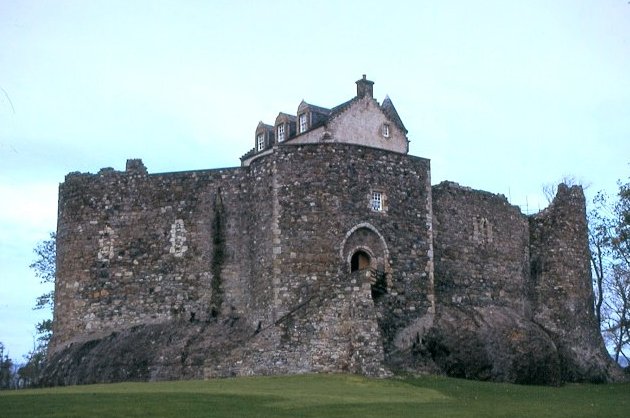 |
Dunstaffnage Castle.
MacArthurs' one of the oldest Argyll clans we owned lands around Loch
Awe which must have been populated in close proximity with MacGregors,
Campbells and even Stewarts. During Robert the Bruce's reign the Gregor
clan were squeezed and later to be outlawed while the MacArthurs were
rewarded with lands from the MacDougalls as thanks for support at
Bannockburn.
We were given the title, at that time, of Captains of Dunstaffnage
Castle in 1309 till 1470. The castle was an impressive fortress built
on and originally occupied by the MacDougalls until captured by The
Bruce in 1309.
|
In 1424 King James
1st returned to Scotland having been imprisoned by the English and he
set to sorting out his rule over Scotland with gusto. There were a
number of clan chiefs summoned to a meeting in Inverness Castle. When
they arrived they were thrown in prison. Among them was the clan chief
of the Arthurs, who it was said could call upon 1,000 men at arms,
probably because of that power he was put to death and his clan lands
and rights were severely curtailed.
The clan never recovered, many dispersed throughout the highlands or
were forced to rent the properties that they had once owned, from the
Campbells.
Circumstances came to a head when in 1771 Patrick MacArthur, chief of
Clan Arthur sold what was left and sailed away to try his fortunes
abroad. Unfortunately he died within the year without a male heir.
This left the clan with no figurehead for 230 years until April 2003,
when after an exhaustive search through the blood lines a "new"
ancestral trail was located and approved by the Lord Lyon King of Arms.
the clan finally had a new Chief.
|
| Kilchurn Castle |
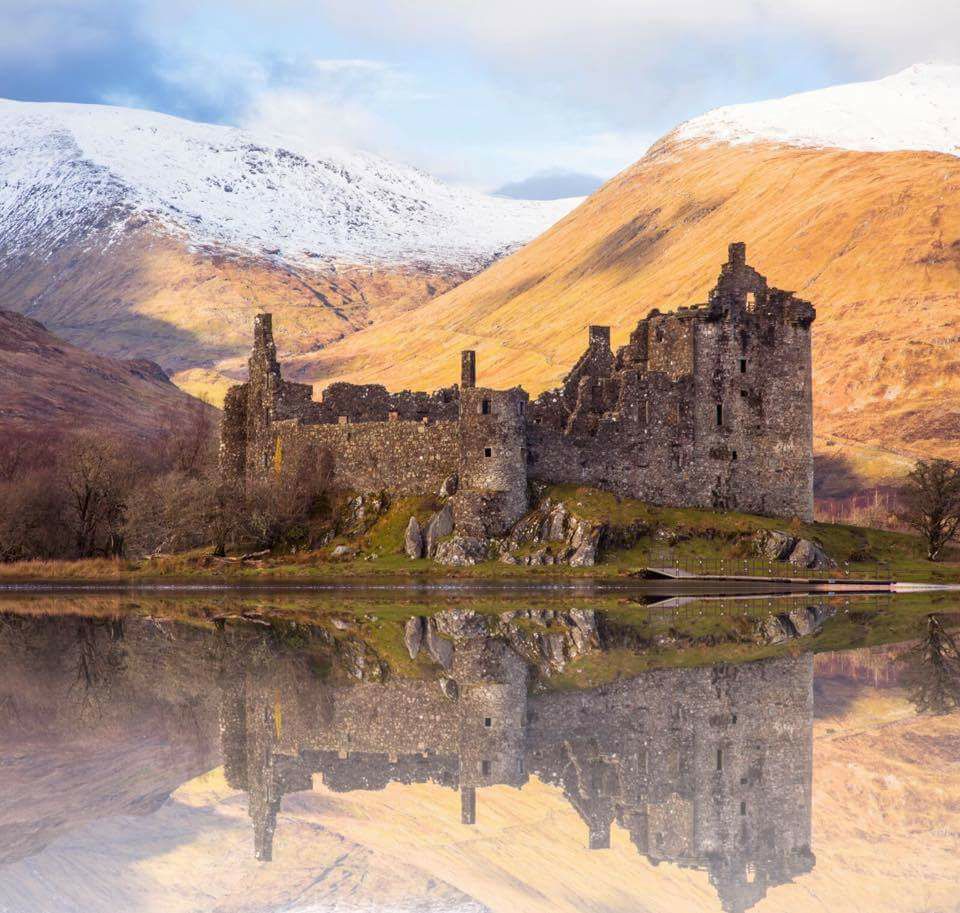 |
| Kilchurn Castle,
a 13th century military fortress located on a small island at the
northern head of Loch Awe. This Castle was given to my ancestors for
supporting Robert the Bruce when he became King of the Scots'. In 1427
the Chief of our Clan was beheaded by King James I, for supporting
Robert the Bruce 200 years earlier. This Castle was to be given to Clan
Campbell, but the few remaining MacArthurs refused to leave. The Chief
of Clan Campbell ordered his clansmen to take the Castle and rid the
Loch of any MacArthurs. The Campbell's, captured Kilchurn Castle and
then drowned all of the MacArthurs......... |
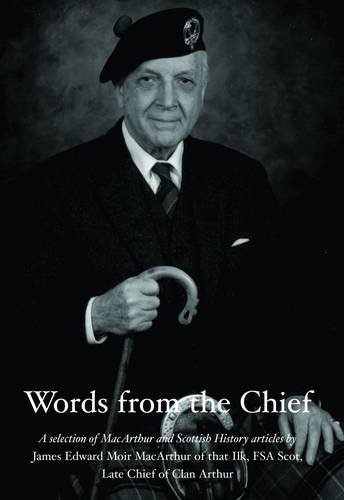
After
a long gap, Canadian-born James Edward Moir MacArthur was recognized by
the Lord Lyon in August 2002 as the Arthur clan chief. The new chief
was 87 at that date and lived in Edinburgh. He had not sought the title
- the research was initiated by a group of senior clan members. The
genealogist had to go back to the 16th century to find a common
ancestor for the last chief, Charles MacArthur of Tirivadich. The Lord
Lyon further decreed that the Chief of Clan Arthur's shield should be
"three antique crowns Or (gold) set on an Azure (blue) background". The
silver cross molene which, up until now, was thought to form part of
the Clan Arthur Chief's shield, has been omitted. James MacArthur's
coat of arms now reverts to the earliest, original arms of Clan Arthur,
a shield identical to the description given in ancient manuscripts for
the legendary King Arthur's blazon. James MacArthur was officially
inaugurated in April 2003 but sadly the old chief died in April 2004.
|
|
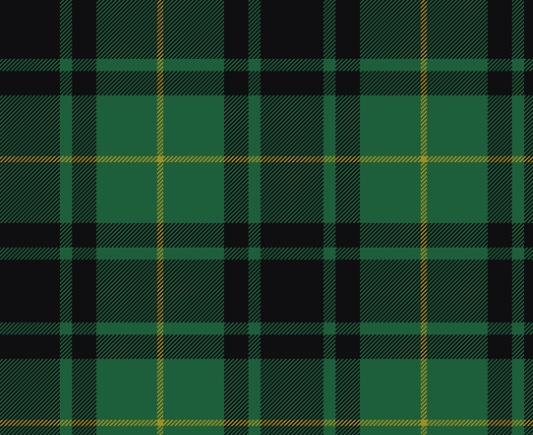
MacArthur Ancient Tartan
|
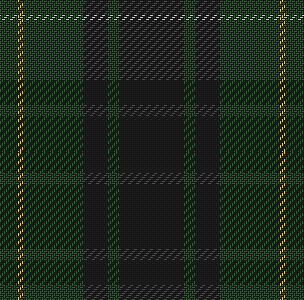
MacArthur Modern Tartan
|
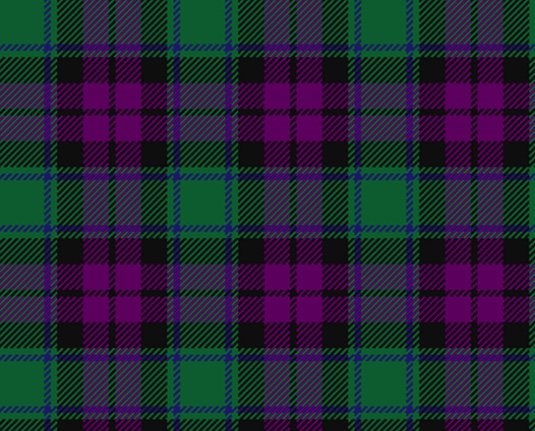
MacArthur Milton Tartan
|
SEE SHOP HOUSE of TARTAN
Top of Page
|